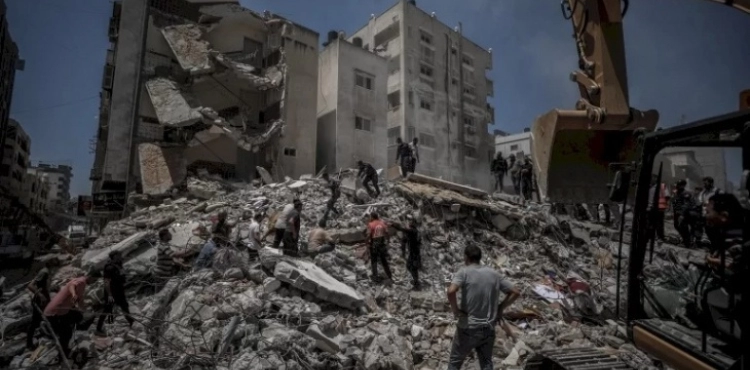The Al-Zaytouna Center for Studies and Consultations said that the total losses and damages of various sectors in the Gaza Strip during the last aggression against it amounted to about 479 million dollars.
In a research paper on Wednesday, the center explained that $292 million of the total was direct damages to the housing and infrastructure sector (housing, public facilities and government buildings, transportation, electricity and energy, communications and information technology, and the infrastructure sector).
The paper allocated $156 million in direct damages to the economic development sector (economic facilities, tourism facilities, and agricultural facilities).
It documented $30 million losses in the form of direct damage to the social development sector (health institutions, social protection institutions, education institutions, cultural, sports, religious institutions and civil society).
The scientific paper was titled: “The Repercussions of the Israeli Aggression in May 2021 on the Gaza Strip and the Reconstruction File.”
It traced the size of the economic losses incurred by the Gaza Strip during the last Israeli aggression in May 2021.
The author of the paper, Raed Muhammad Helles, analyzed the reflection of the policy of siege and aggression on the economic sectors, and discussed the various dimensions of the issue of the fourth reconstruction of Gaza.
He said that the Israeli aggression on Gaza had left wide-ranging damage to all economic sectors and caused heavy economic losses.
In the housing sector, about 1,447 housing units in Gaza were completely demolished as a result of the Israeli bombing, along with another 13,000 that were partially damaged to varying degrees, in addition to the total demolition of about 205 homes, apartments and residential towers, and about 75 government headquarters and public facilities were damaged, which varied Between service facilities and security headquarters. According to estimates, the
researcher considered that the extent of the damage calls for the immediate start of all official government agencies, the private sector, UNRWA, international organizations and bodies, donor countries, brotherly Arab countries, and friendly countries of the world, to work to rebuild what was destroyed by the occupation during the last aggression, and to develop and rehabilitate the Gaza Strip. Mobilizing the necessary funding for the reconstruction process, focusing on its development dimension to create job opportunities, and enhance the capacity of the economy.
Helles considered that the issue of reconstruction is manifested in more than one dimension, as it has a human rights, political, humanitarian and developmental dimension.
The human rights dimension, according to the researcher, is that the reconstruction of what was destroyed by the recent aggression on the Gaza Strip is a duty and responsibility and not a grant from anyone, and that the one who caused the damage is the one who is responsible for reparation legally, and the international community is also responsible jointly with the occupation in the reconstruction.
While the researcher considered that the political dimension in the issue of reconstruction is that what the occupation destroyed during the aggression aimed at weakening the entire national project, and destroying the possibility of settling the Palestinian-Israeli conflict leading to the establishment of a Palestinian state in the context of the internationally approved two-state solution.
The researcher put forward a development vision based primarily on a reconstruction program and responding to the extent of damage and losses caused by the aggression, in an effort to create job opportunities and strengthen the economy´s capacity.
The most prominent features of the vision are based on giving priority to housing needs in parallel with the infrastructure sector, the health and education sectors, the water sector, and the energy and electricity sector, in addition to the need for rapid relief intervention in order to heal the wounds of the victims and enable those affected to return to normal life as soon as possible.
In his vision, the researcher called for seeking to find an environment conducive to investment, defining a new mechanism for the reconstruction process and mobilizing the necessary funding for it.












